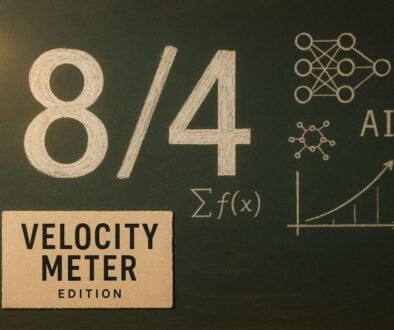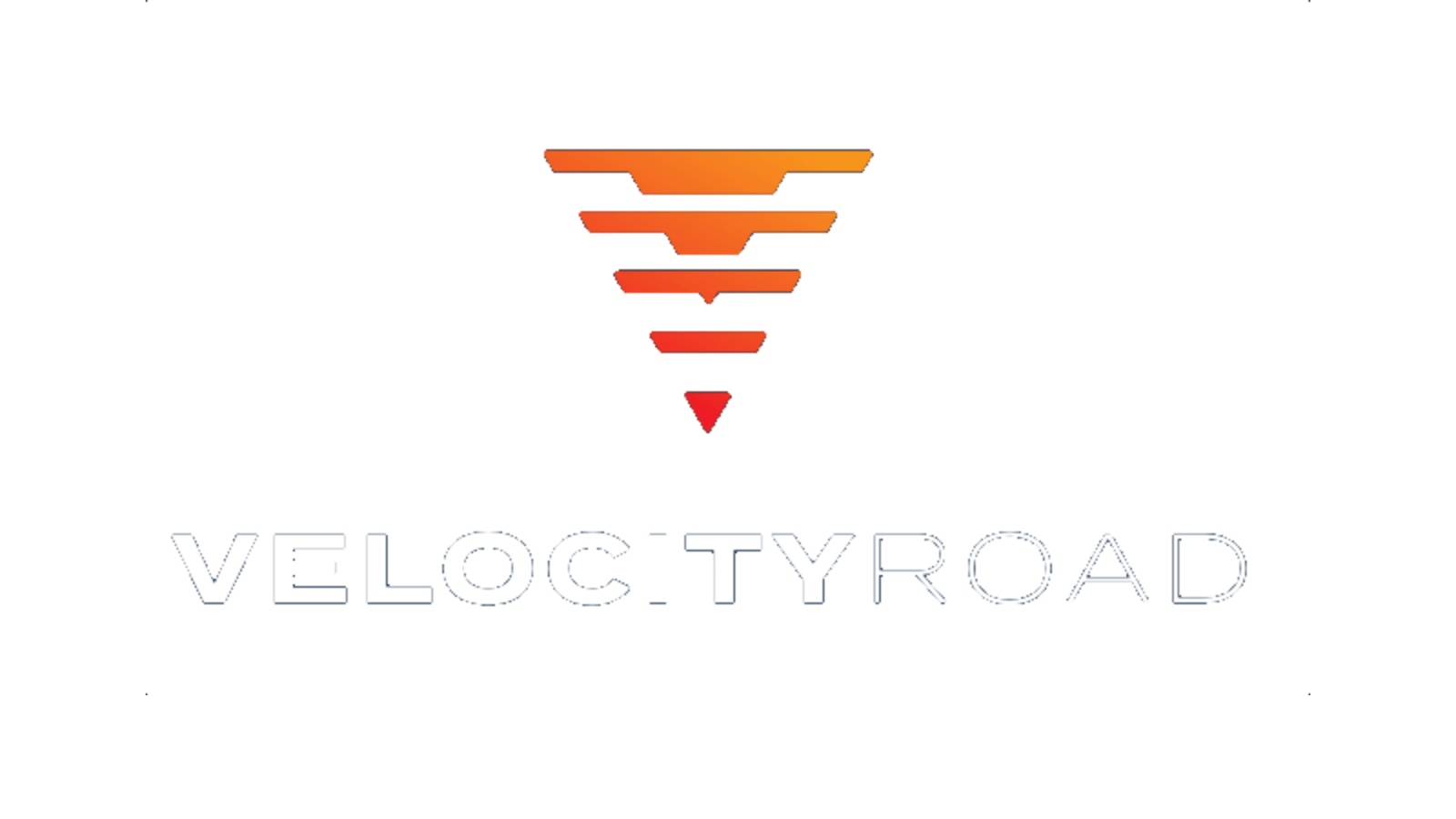Velocity Meter 8.11
🏗️ The Foundation Wars: Why AI’s Next Chapter is About Building Better Ground, Not Better Models
The race for AI supremacy just shifted gears—and most companies are still watching the wrong game. While headlines obsess over which model scored highest on the latest benchmark, the smartest organizations have quietly pivoted to a fundamentally different strategy: building the foundational infrastructure that will determine who can actually deploy, scale, and capture value from AI at enterprise scale.
This isn’t about having the flashiest AI demos anymore. It’s about having the strongest operational foundation when the industry moves beyond experimentation into serious business transformation. Gartner identifies AI agents and AI-ready data as the two fastest advancing technologies in 2025, both sitting at the Peak of Inflated Expectations—which means the companies that get the foundations right will separate dramatically from those that don’t.
The foundation wars have begun. The question isn’t whether your AI can write better emails—it’s whether your organization can rapidly adapt, integrate, and scale when AI capabilities evolve every quarter.
Let’s dive in.

🔧 The Context Architecture Imperative: Moving Beyond Prompt-Based AI

The most significant development in enterprise AI isn’t happening in model capabilities—it’s occurring in the foundational layer that determines how AI systems understand and respond to business context. Mark Ogne’s analysis reveals that prompt engineering has reached its natural limits, creating an architectural ceiling that explains why many organizations struggle to capture AI’s promised value despite impressive demos.
The limitation is structural, not technological. Companies that built AI strategies around prompt optimization are discovering they can scale content production but not business relevance. They can increase output velocity but not strategic precision. New infrastructure protocols like Model Context Protocol (MCP) represent a fundamental shift toward AI systems that understand organizational knowledge, business logic, and operational context rather than responding to isolated instructions.
MCP functions as a standardized interface between AI models and enterprise systems, enabling AI to access and interpret business context dynamically. Instead of crafting increasingly complex prompts, organizations can build AI that inherently understands customer profiles, competitive positioning, regulatory requirements, and strategic priorities.
Leading organizations have moved beyond the prompt optimization paradigm entirely. They’re architecting AI systems that know their business—not just their instructions.
Consider the difference: A prompt-based approach might generate a sales email. A context-engineered system knows your buyer’s journey stage, competitive landscape, pricing guardrails, and compliance requirements—then generates content that advances actual deals rather than just filling inboxes.
The infrastructure implications are massive:
-
Knowledge Architecture: Companies that invest in AI at scale need to evolve their data management practices, extending capabilities to AI-specific use cases rather than hoping general tools will suffice
-
Integration Layers: MCP enables AI agents to access tools, data, and services without manual integration work, creating composable AI architectures that can evolve rapidly
-
Security Foundations: Google’s AI-based bug hunter found 20 security vulnerabilities, demonstrating how AI can enhance rather than compromise security when properly architected
The companies winning the foundation wars are treating AI like infrastructure, not like software. They’re building retrieval-augmented generation pipelines, embedding vector stores aligned to strategic domains, and creating governance structures that assign owners to knowledge assets.
📌 Bottom Line: The competitive advantage isn’t in having better AI tools. It’s in building organizational knowledge architectures that make your AI genuinely intelligent about your business, not just eloquent about general topics.

🏭 AI Across Industries: Foundations Taking Shape

💰 Financial Services: The Knowledge Moat Construction
The finance industry is rapidly discovering that AI’s value lies not in replacing human judgment but in amplifying institutional knowledge at scale. Harvard Business Review’s research on finance teams reveals that successful AI adoption requires two critical enablers: employee retention and financial slack. When MIT research shows generative AI making accountants more productive by reallocating 8.5% of time from data entry to high-value analysis, the pattern becomes clear: AI amplifies human expertise rather than replacing it. Meanwhile, investment banking faces its own foundation question as new AI tools like Claude for Financial Services and Shortcut AI threaten to automate modeling and presentation work—but the winners will be firms that use AI to enhance deal origination and client relationships, not just streamline spreadsheets.
📌 Takeaway: Financial institutions that build AI foundations around human expertise and institutional knowledge will create defensive moats that pure-tech approaches can’t match.
⚖️ Legal Services: The Specialization Foundation
The legal industry is proving that highly specialized AI foundations can deliver extraordinary returns when built correctly. Legal AI startup Harvey just hit $100 million in annual recurring revenue, with user base quadrupling in the past year. But Harvey’s success isn’t about having better language models—it’s about building AI that understands legal workflows, compliance requirements, and firm economics. The platform assists with legal research, drafting, and diligence projects because it was architected specifically for legal use cases rather than adapted from general tools.
📌 Takeaway: Professional services firms that invest in domain-specific AI foundations rather than general tools will capture sustainable competitive advantages through specialization depth.
🏢 Insurance: The Risk Intelligence Platform
Insurance companies are finding that AI’s greatest value lies in combining human judgment with machine pattern recognition to create superior risk assessment capabilities. Vertafore’s research on “augmented underwriters” shows how AI reduces standard policy decision times from 3-5 days to 12.4 minutes while maintaining 99.3% accuracy. The breakthrough isn’t speed alone—it’s the ability to analyze vast amounts of diverse data to identify patterns human underwriters might miss. AI isn’t replacing underwriter expertise; it’s amplifying their ability to evaluate complex risks and build better portfolios.
📌 Takeaway: Insurers that build AI foundations focused on risk intelligence rather than process automation will deliver both operational efficiency and superior underwriting results.
🏦 Banking Operations: The Internal Foundation First
Smart financial institutions are taking a measured approach to AI deployment, focusing on internal operational excellence before customer-facing applications. TD Bank is prioritizing AI for internal operations, emphasizing “employee-facing, human-in-the-loop experiences that lead to better efficiency and productivity.” This strategy recognizes that sustainable AI foundations require operational mastery before customer deployment—ensuring that when AI does reach customers, it’s supported by robust, tested systems.
📌 Takeaway: Banks that master AI foundations in back-office operations first will deliver more reliable and sophisticated customer experiences when they scale AI outward.

📊 AI by the Numbers: Foundation Metrics That Matter

🚀 20 security vulnerabilities – Number of flaws discovered by Google’s AI-based bug hunter Big Sleep in its first operational deployment, demonstrating how AI can strengthen rather than compromise security foundations when properly architected
💼 $100 million ARR – Annual recurring revenue achieved by legal AI startup Harvey after just three years, with weekly users quadrupling in the past year, proving that specialized AI foundations can scale rapidly in professional services
⚡ 8.5% time reallocation – Percentage of accountant time shifted from routine data entry to high-value analysis when using generative AI, while improving reporting quality with 12% better ledger granularity and 7.5-day faster monthly closes
🎯 985% increase – Growth in job postings for agentic AI roles between 2023 and 2024, according to McKinsey research, while Python emerges as the most valuable skill across sectors, appearing in 57% of agentic AI job postings
🔧 99.3% accuracy – Risk assessment accuracy achieved by AI in insurance underwriting while reducing standard policy decision times from 3-5 days to 12.4 minutes, demonstrating operational transformation without sacrificing precision

📰 5 AI Headlines You Need to Know

🤖 OpenAI Launches GPT OSS Open-Source Model Family – OpenAI released its first open-source models—gpt-oss-120b with 117B parameters and gpt-oss-20b with 21B parameters—both using mixture-of-experts architecture and 4-bit quantization for efficient deployment. Licensed under Apache 2.0, these models enable advanced reasoning and agentic tasks while fitting on consumer hardware, representing a significant shift toward democratizing AI capabilities.
⚡ OpenAI Unveils GPT-5 with Revolutionary Context Understanding – GPT-5 launches with a 256,000-token context window and dramatically reduced hallucination rates—26% fewer errors than GPT-4o and 65% fewer for the thinking variant. The model demonstrates PhD-level expertise across domains while introducing variants like gpt-5-mini and gpt-5-nano for different use cases, marking a maturation toward reliable enterprise deployment.
🔧 McKinsey Reveals the AI Skills Gap Reality – New research exposes a critical mismatch between AI hype and hiring reality: prompt engineering demand has collapsed with supply exceeding demand 4:1, while Python skills show severe shortages across sectors. The study reveals that foundational programming capabilities matter more than trendy AI specializations for long-term career prospects.
💼 Distributed AI Leadership Trumps Chief AI Officers – Harvard Business Review research shows that successful AI transformation requires distributed leadership rather than single CAIOs, with companies like Holmes Murphy demonstrating how cross-functional AI leadership teams outperform centralized approaches. The study reveals that ecosystem-based leadership creates better alignment between AI capabilities and business outcomes.
🏗️ New Protocols Enable True AI Agent Collaboration – Anthropic’s Model Context Protocol (MCP) and Google’s Agent2Agent protocol (A2A) are establishing standards for AI agent interaction and collaboration. With over 15,000 MCP servers already deployed and 150 companies partnering on A2A development, these protocols are building the infrastructure for multi-agent AI systems that can navigate complex enterprise workflows.

🎯 The Foundation Advantage: Why Infrastructure Beats Innovation

This week’s developments reveal a fundamental shift in how AI value gets created and captured. The companies making headlines aren’t necessarily those with the flashiest demos—they’re the ones building robust operational foundations that can adapt and scale as AI capabilities evolve.
Harvey’s $100 million revenue run rate wasn’t achieved through superior language models. It came from understanding legal workflows deeply enough to build AI that truly serves law firm operations. Finance teams seeing real AI success aren’t those with the most AI tools—they’re those with strong organizational foundations like employee retention and financial slack that enable sustainable adoption.
The pattern is unmistakable across industries: foundation beats features. Context architecture beats prompt optimization. Specialized knowledge systems beat general-purpose tools.
Organizations that recognize this shift are investing in AI-ready data, governance frameworks, and integration protocols rather than chasing the latest model releases. They’re building what Gartner calls the foundational enablers that support sustainable AI delivery.
The foundation wars will determine which companies can move from AI experimentation to AI transformation. The winners won’t be those with the best individual AI capabilities—they’ll be those with the strongest organizational foundations for making any AI capability work effectively.
Your competitive advantage lies not in what AI can do today, but in how quickly your foundation can adapt to what AI will do tomorrow.
📩 Ready to accelerate your AI transformation?
🎯 At Velocity Road, we help mid-market companies move beyond AI experimentation to build the organizational foundations that enable sustainable AI transformation. From strategic planning to workforce enablement, we ensure your AI investments create lasting competitive advantages.
Let’s discuss how we can accelerate your AI journey—schedule a consultation today.
📬 Forward this newsletter to colleagues who need to understand AI’s production reality. And if you’re not subscribed yet, join thousands of executives getting weekly intelligence on AI’s business impact.
Until next week,
The Velocity Road Team




